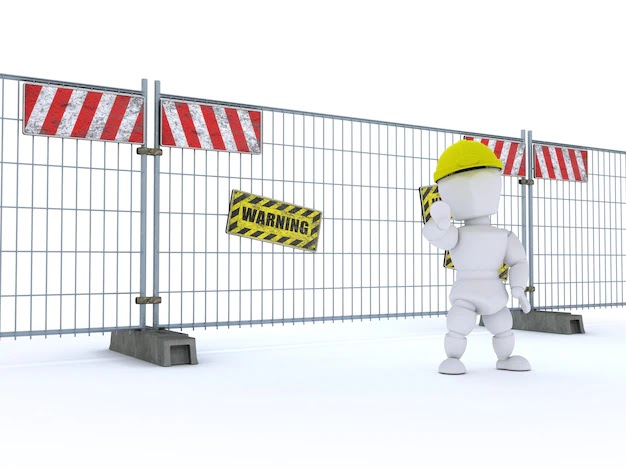
Preventing Accidental Poisoning
I. Understanding Common Sources of Accidental Poisoning
1. Household Chemicals
Household chemicals are among the most common causes of accidental poisoning, especially in children. These include:
- Cleaning Products: Items such as bleach, ammonia, drain cleaners, and toilet bowl cleaners contain harsh chemicals that can be toxic if ingested or inhaled.
- Pesticides and Insecticides: Products used to kill bugs, rodents, or weeds often contain toxic ingredients.
- Automotive Products: Antifreeze, motor oil, and windshield washer fluids are highly toxic and should be stored securely.
2. Medications
Medications are another leading cause of accidental poisoning, particularly in homes with children or elderly individuals:
- Prescription Medications: Misuse of prescription drugs, whether intentional or accidental, can lead to severe health issues.
- Over-the-Counter Medications: Even non-prescription medications like pain relievers, cold medicines, and vitamins can be harmful in large doses.
- Expired Medications: Outdated medications may become more potent or toxic over time, increasing the risk of poisoning.
3. Food and Drink Contaminants
Contaminants in food and beverages can also lead to accidental poisoning:
- Spoiled Food: Consuming food that has been improperly stored or has expired can result in food poisoning.
- Chemical Contaminants: Some foods may be contaminated with chemicals such as pesticides, which can cause poisoning if ingested.
- Alcohol: Accidental ingestion of alcohol, especially in children, can lead to poisoning.
4. Carbon Monoxide
Carbon monoxide (CO) is a colorless, odorless gas that can cause poisoning when inhaled:
- Sources: Common sources include malfunctioning heating systems, gas stoves, fireplaces, and car exhaust.
- Symptoms: Early symptoms of CO poisoning include headaches, dizziness, nausea, and confusion. Prolonged exposure can be fatal.
II. Preventing Accidental Poisoning in the Home
1. Safe Storage of Chemicals and Medications
One of the most effective ways to prevent accidental poisoning is by ensuring that all hazardous substances are stored safely:
- Lock It Up: Store medications, cleaning products, and other hazardous substances in locked cabinets or containers, out of reach of children and pets.
- Label Clearly: Ensure that all containers are clearly labeled with their contents and proper usage instructions. Never store chemicals in food or drink containers, as this can lead to confusion.
- Keep Products in Original Containers: Always keep products in their original packaging to avoid misuse or accidental ingestion. The packaging usually contains important safety information and instructions for use.
- Dispose of Unused Medications Properly: Follow local guidelines for disposing of unused or expired medications. Do not flush them down the toilet or throw them in the trash where they could be found by children or pets.
2. Childproofing Your Home
If you have young children, childproofing your home is essential to prevent accidental poisoning:
- Install Child Safety Locks: Use child safety locks on cabinets and drawers that contain hazardous substances.
- Use Child-Resistant Packaging: Whenever possible, purchase products with child-resistant packaging. However, remember that child-resistant does not mean child-proof, so additional precautions are necessary.
- Educate Children: Teach children about the dangers of certain household products and medications. Make sure they understand that these items should only be handled by adults.
3. Preventing Carbon Monoxide Poisoning
Carbon monoxide poisoning is a silent threat that can be deadly if not detected early:
- Install CO Detectors: Place carbon monoxide detectors near sleeping areas and on each level of your home. Test the detectors regularly and replace batteries as needed.
- Maintain Appliances: Have heating systems, gas stoves, and fireplaces inspected annually by a qualified technician to ensure they are functioning correctly and safely.
- Never Use Outdoor Equipment Indoors: Never use generators, grills, or other outdoor equipment indoors or in enclosed spaces like garages, as they can produce dangerous levels of carbon monoxide.
4. Food Safety Practices
Proper food handling and storage can prevent food poisoning:
- Store Food Correctly: Refrigerate perishable foods promptly and keep the refrigerator temperature at or below 40°F (4°C). Follow the "first in, first out" principle to use older items before newer ones.
- Cook Food Thoroughly: Cook meat, poultry, and eggs to the appropriate temperatures to kill harmful bacteria. Use a food thermometer to ensure food reaches a safe internal temperature.
- Avoid Cross-Contamination: Keep raw meat, poultry, and seafood separate from other foods. Use separate cutting boards and utensils for raw and cooked foods.
- Check Expiration Dates: Regularly check expiration dates on food items and discard anything that is past its prime or shows signs of spoilage.
III. Preventing Accidental Poisoning in the Workplace
1. Safety Training and Education
Employers should provide comprehensive safety training to all employees, especially those who work with hazardous substances:
- Proper Handling Procedures: Employees should be trained in the correct handling, storage, and disposal of chemicals and other hazardous materials.
- Use of Personal Protective Equipment (PPE): Workers should be equipped with and trained to use appropriate PPE, such as gloves, masks, and goggles, to protect against exposure to toxic substances.
- Emergency Procedures: Ensure that employees know how to respond in case of accidental poisoning, including using emergency eyewash stations, chemical showers, and first aid.
2. Safe Storage and Labeling of Chemicals
Workplaces that use hazardous chemicals should implement strict storage and labeling protocols:
- Chemical Inventory: Maintain an up-to-date inventory of all chemicals used on-site, including their quantities and locations.
- Labeling: All containers should be clearly labeled with the chemical name, hazard warnings, and instructions for safe handling and storage.
- Secure Storage: Store chemicals in designated areas with appropriate ventilation and access controls. Ensure that incompatible chemicals are stored separately to prevent dangerous reactions.
3. Regular Safety Audits
Conduct regular safety audits to identify potential risks and ensure compliance with safety regulations:
- Routine Inspections: Inspect storage areas, equipment, and safety devices regularly to identify and address any issues.
- Review Safety Data Sheets (SDS): Ensure that SDS for all chemicals are readily available and up to date, and that employees know how to access and interpret them.
- Update Safety Protocols: Continuously review and update safety protocols to reflect new information, technology, or changes in workplace conditions.
IV. Preventing Accidental Poisoning Outdoors
1. Identifying Poisonous Plants and Animals
When spending time outdoors, it's important to be aware of potential poisoning risks from plants and animals:
- Learn to Identify Dangerous Species: Educate yourself on local poisonous plants, such as poison ivy, poison oak, and poison sumac, as well as venomous animals like snakes and spiders.
- Wear Protective Clothing: When hiking or camping, wear long sleeves, pants, and sturdy boots to reduce the risk of coming into contact with poisonous plants or animals.
- Avoid Touching Unknown Plants or Animals: If you are unsure about a plant or animal, do not touch it. Teach children to do the same.
2. Safe Use of Insect Repellents and Sunscreens
Insect repellents and sunscreens are essential for outdoor safety, but they should be used correctly to avoid accidental poisoning:
- Follow Instructions: Read and follow the instructions on insect repellent and sunscreen labels. Do not apply insect repellent to broken skin or near the eyes and mouth.
- Avoid Over-Application: Use the recommended amount and avoid over-applying these products. Wash off repellents and sunscreens when they are no longer needed.
- Keep Out of Reach of Children: Store insect repellents and sunscreens out of reach of children, and supervise their use to prevent accidental ingestion or misuse.
3. Water Safety
Water sources in the wild can be contaminated with harmful bacteria, viruses, or chemicals:
- Purify Water: Always purify water from natural sources before drinking. Use methods such as boiling, filtration, or chemical treatment to make water safe.
- Avoid Polluted Areas: Avoid swimming, fishing, or collecting water near areas that are known to be polluted or where warning signs are posted.
V. What to Do in Case of Accidental Poisoning
1. Recognizing the Signs of Poisoning
Recognizing the symptoms of poisoning is critical for prompt treatment:
- General Symptoms: Symptoms of poisoning can vary depending on the substance but may include nausea, vomiting, diarrhea, dizziness, confusion, difficulty breathing, and loss of consciousness.
- Skin Contact: Poisoning from skin contact with a toxic substance may result in redness, irritation, blistering, or burns.
- Inhalation: Inhalation of toxic fumes can cause coughing, shortness of breath, dizziness, and respiratory distress.
2. Immediate Actions to Take
If you suspect someone has been poisoned, take immediate action:
- Stay Calm: Keep calm and assess the situation to determine the type of poisoning.
- Call for Help: Contact your local poison control center immediately for guidance. In the United States, you can reach the Poison Help hotline at 1-800-222-1222, and in the India, call 1800-425-1213.
- Follow Instructions: Follow the instructions provided by poison control or emergency responders. Do not induce vomiting or give anything by mouth unless instructed to do so.
- Seek Medical Attention: If the person is unconscious, having trouble breathing, or experiencing seizures, call emergency services immediately.

Conclusion
Preventing accidental poisoning requires vigilance, education, and proactive safety measures. Whether at home, in the workplace, or outdoors, understanding the risks and implementing preventive strategies can help protect you and your loved ones from the dangers of accidental poisoning. By following the guidelines outlined in this blog, you can create a safer environment and respond effectively if an incident occurs. Remember, safety starts with awareness and preparation.
FAQ
Ques 1: What are the most common household items that can cause accidental poisoning?
Ans: Common household items that can cause accidental poisoning include cleaning products (like bleach and ammonia), medications (both prescription and over-the-counter), pesticides, antifreeze, and certain cosmetics. To prevent poisoning, these items should be stored securely, out of reach of children and pets, and in their original containers with clear labels.
Ques 2: How can I childproof my home to prevent accidental poisoning?
Ans: To childproof your home, store all hazardous substances in locked cabinets or out of reach of children. Use child-resistant packaging for medications and household chemicals, and install safety locks on cabinets and drawers. Additionally, educate your children about the dangers of certain products and ensure that all items are labeled clearly.
Ques 3: What steps should I take to prevent carbon monoxide poisoning in my home?
Ans: To prevent carbon monoxide poisoning, install carbon monoxide detectors on each level of your home and near sleeping areas. Have your heating systems, gas stoves, and fireplaces inspected annually by a professional. Never use outdoor equipment, like generators or grills, inside your home or in enclosed spaces like garages.
Ques 4: How can I safely store and dispose of medications to prevent poisoning?
Ans: Store medications in a secure, locked cabinet, out of reach of children and pets. Keep them in their original containers with labels intact. Dispose of unused or expired medications properly by following local guidelines—do not flush them down the toilet or throw them in the trash where they could be accessed by children or animals.
Ques 5: What should I do if I suspect someone has been poisoned?
Ans: If you suspect poisoning, stay calm and assess the situation. Contact your local poison control center immediately for guidance (in the U.S., call 1-800-222-1222 and in the India, call 1800-425-1213). Follow the instructions provided and avoid inducing vomiting or giving anything by mouth unless directed to do so. If the person is unconscious, having trouble breathing, or having seizures, call emergency services immediately.







Do Leave Your Comment